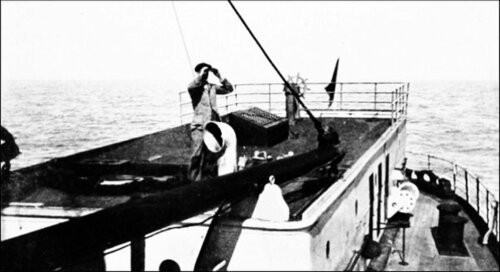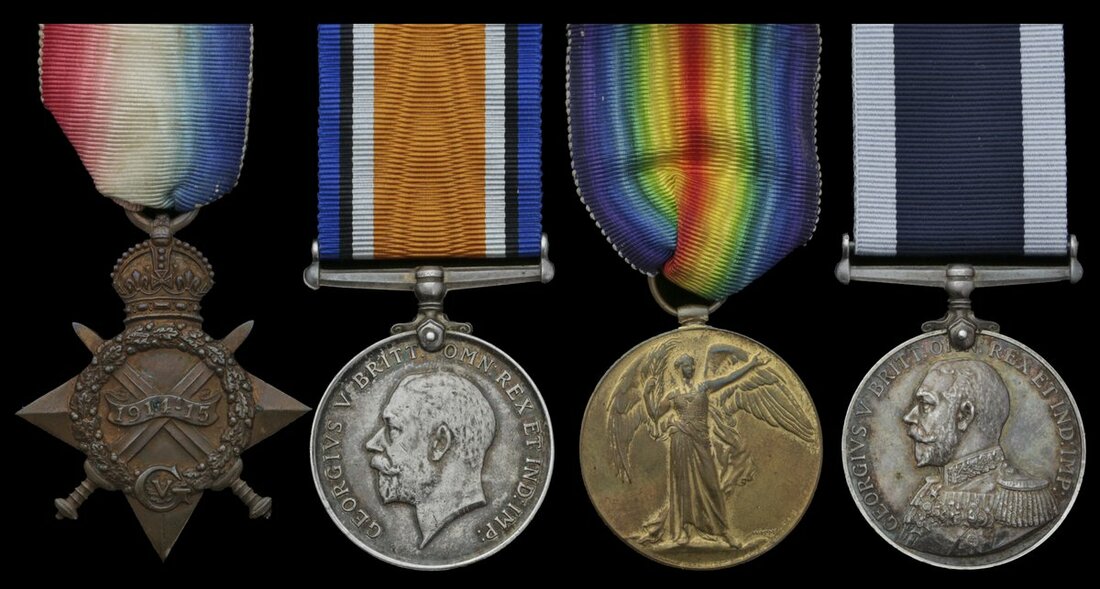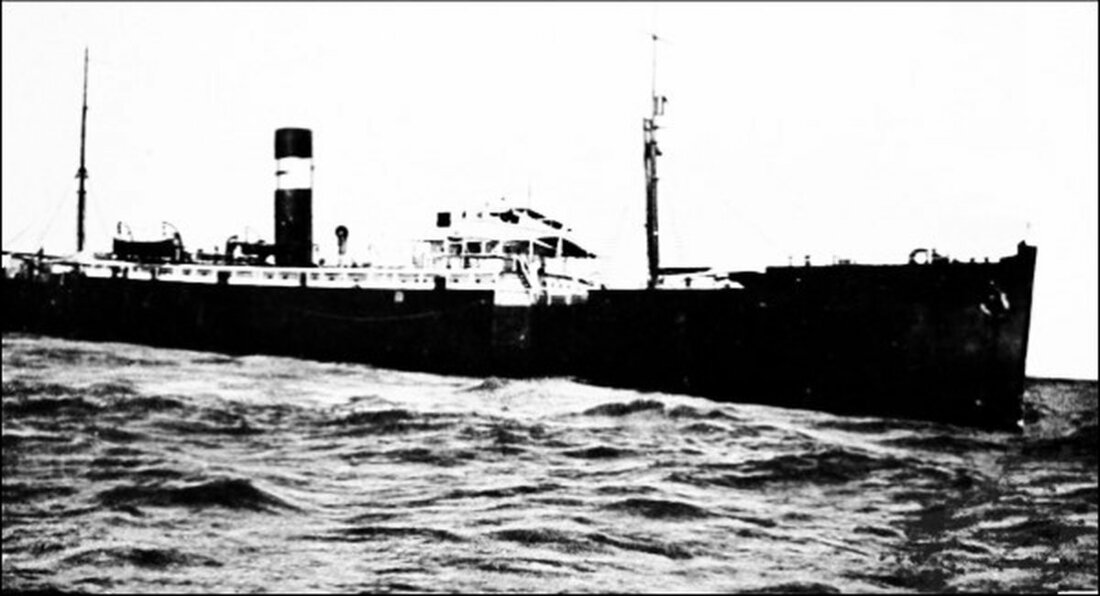Auction: 22001 - Orders, Decorations and Medals
Lot: 213
A Great War campaign group of four awarded to Stoker Petty Officer F. Austin, Royal Fleet Reserve, late Royal Navy, who served in the Q-Ship Barranca from June 1916 until May 1917
1914-15 Star (287647 F. Austin, L. Sto., R.N.); British War and Victory Medals (287647 F. Austin, S.P.O., R.N); Royal Navy L.S. & G.C., G.V.R (287647 F. Austin, S.P.O., R.N H.M.S. Victory), very fine or better (4)
Frederick Austin was born at Stainshaw, Hampshire on 3 March 1879 and entered the Royal Navy as a Stoker 2nd Class in January 1898.
Having then come ashore and enrolled in the Royal Fleet Reserve as a Stoker 1st Class in January 1910, he returned to sea in the battleship H.M.S. Cochrane in April 1913 and remained likewise employed until November 1915.
Q-Ships
In the summer of 1916, his wartime career entered the clandestine world of Q-Ships when, in June 1916, he joined Q-3 (a.k.a. Barranca and Echunga). He was to remain similarly employed until May 1917.
A glimpse of the Barranca at work is to be found in E. Keble Chatterton's Q-Ships and Their Story:
'In the middle of November 1916, the Barranca (Lieutenant-Commander S. C. Douglas, R.N.) was sent from Queenstown via Devonport, and proceeded to operate in the neighbourhood of Madeira and the Canaries, based on Gibraltar. This ship, known officially as Q 3 (alias Echunga), had been taken over from Messrs. Elders and Fyffes Ltd. Her registered tonnage was 4,115, and she had a speed of 14 knots, so she was eminently fitted for this kind of work. She had been employed as a Q-ship since June 1916, and was armed with a 4-inch, two 12-pounders, and two 6-pounders, and terminated her service in the following May. Her captain had been one of the earliest officers to be employed in decoy work, having been second in command to Lieutenant-Commander Godfrey Herbert when that officer commanded the Antwerp.'
Moreover, several images of the Barranca appear in Q-Ships and Their Story, by way of illustrating the many disguises adopted by such vessels. Keble Chatterton continues:
'If you will examine the photos of Commander Douglas's Q-ship Barranca, you will see how cleverly, by means of a little faking, even a much bigger ship could be disguised. In one picture you see her alley-ways covered up by a screen, funnel markings altered, and so on; whilst in another the conspicuous white upper-works, the white band on the funnel, and the dark hull make her a different ship, so that, he tells me, on one occasion after passing a suspicious neutral steamer and not being quite satisfied, he was able to steam out of sight, change his ship's appearance, and then overtake her, get quite close and make a careful examination without revealing his identity. To the landsman all this may seem impossible, but in as much as the sea is traversed nowadays by steamers differing merely in minute details, distinguished only to the practised eye of the sailor, such deception is possible.'
Barranca was released from Q-Ship duties in April 1917, in which month her part in a rescue operation won the recently promoted Commander Stopford Douglas an Admiralty commendation, for 'the able and seamanlike way in which he worked in order to find the boats of a steamship which had been torpedoed on 8-9 April 1917'.
Postscript
Austin's final wartime appointment was in the destroyer Savage from December 1917 until December 1918, and he finally came ashore in June 1922.
Subject to 20% VAT on Buyer’s Premium. For more information please view Terms and Conditions for Buyers.
Sold for
£130
Starting price
£130









